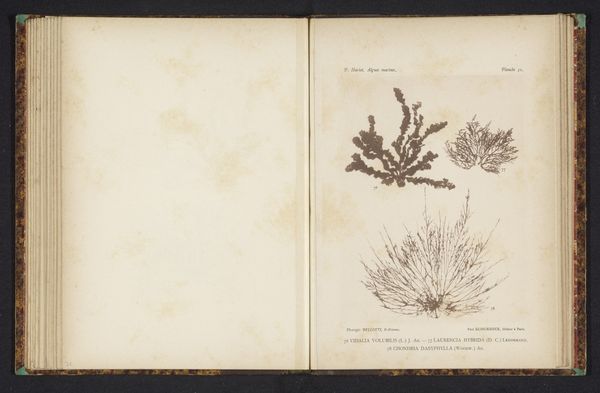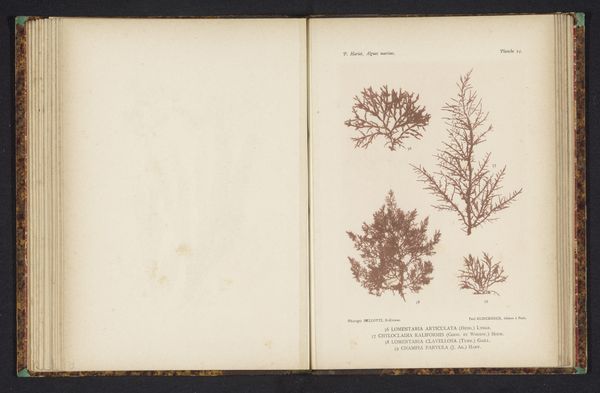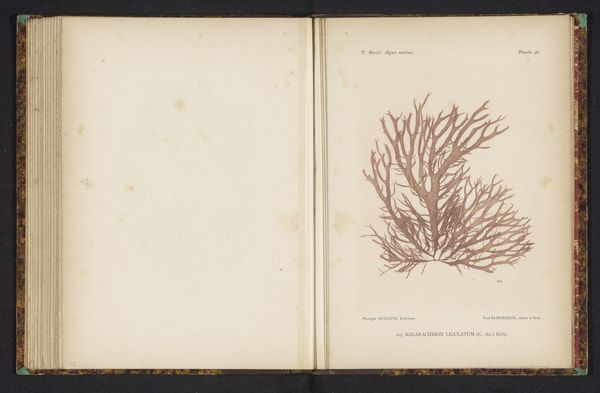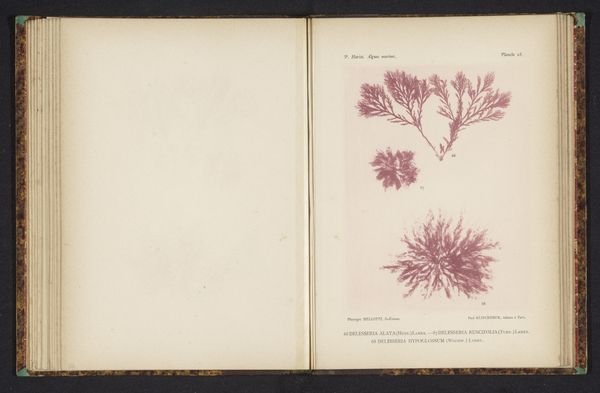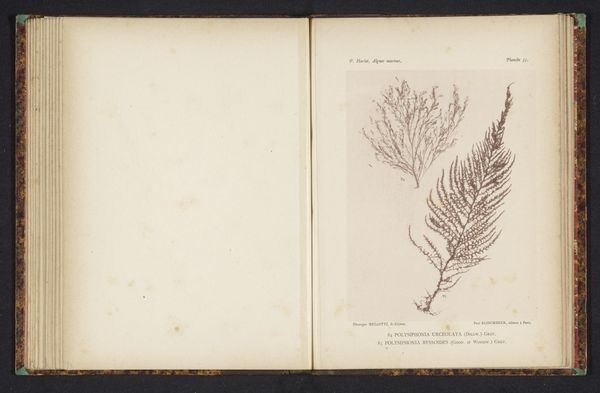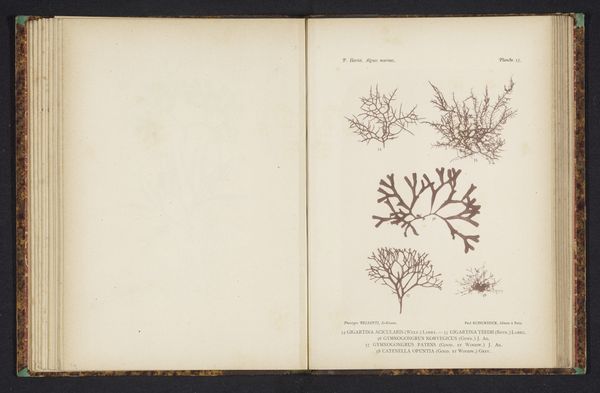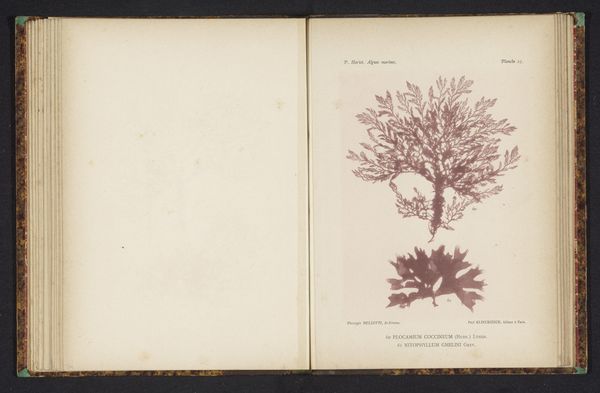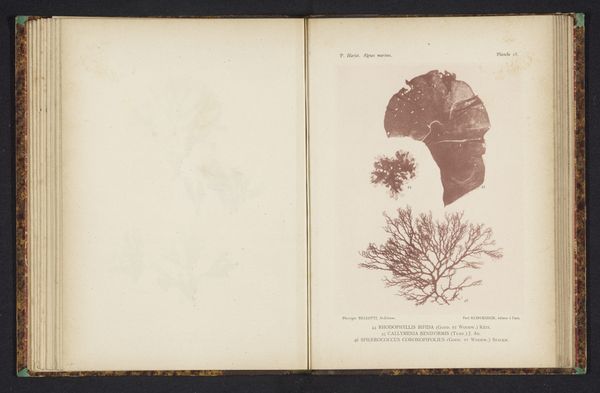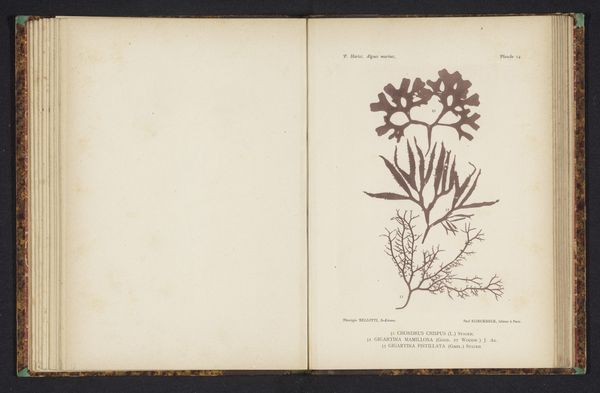
drawing, paper, ink
#
drawing
#
paper
#
ink
#
coloured pencil
#
naturalism
Dimensions: height 161 mm, width 119 mm
Copyright: Rijks Museum: Open Domain
Editor: Here we have *Drie soorten zeewier*, or Three Types of Seaweed, made before 1892 by an anonymous artist. It's ink drawing on paper. Looking at it, I am struck by how delicate and precise the lines are. What do you make of this drawing? Curator: From a materialist perspective, this drawing offers insight into the means of scientific documentation and dissemination of knowledge. The use of ink on paper reveals a conscious choice driven by factors such as cost, availability, and reproducibility. Were these images designed for mass distribution via printing, making them accessible to researchers and the broader public? Editor: That’s interesting. I was focused on the artistry. How would this relate to craft traditions? Curator: Think about it: Botanical illustrations, while seemingly scientific, required specialized labor and skill. The crafting of these drawings – the precise rendering of form, texture, and detail – represents a distinct form of artistic production. Were such illustrations part of larger books meant for collectors or purely functional? These choices tell us much about labor conditions. Editor: That makes sense. I hadn’t considered how accessible seaweed illustrations were, but printing would make a big difference. Curator: Precisely. And who controlled the means of production – who commissioned these illustrations and profited from their distribution? What were the social and economic dynamics at play here? What we see on the page, while seemingly straightforward, represents the intersection of science, art, labor, and economics. Editor: I never thought about botanical drawings that way. I’m starting to see a lot more. Thanks for your perspective! Curator: And I, in turn, am reminded how vital a single, simply rendered artwork can be in representing a wealth of human actions.
Comments
No comments
Be the first to comment and join the conversation on the ultimate creative platform.
